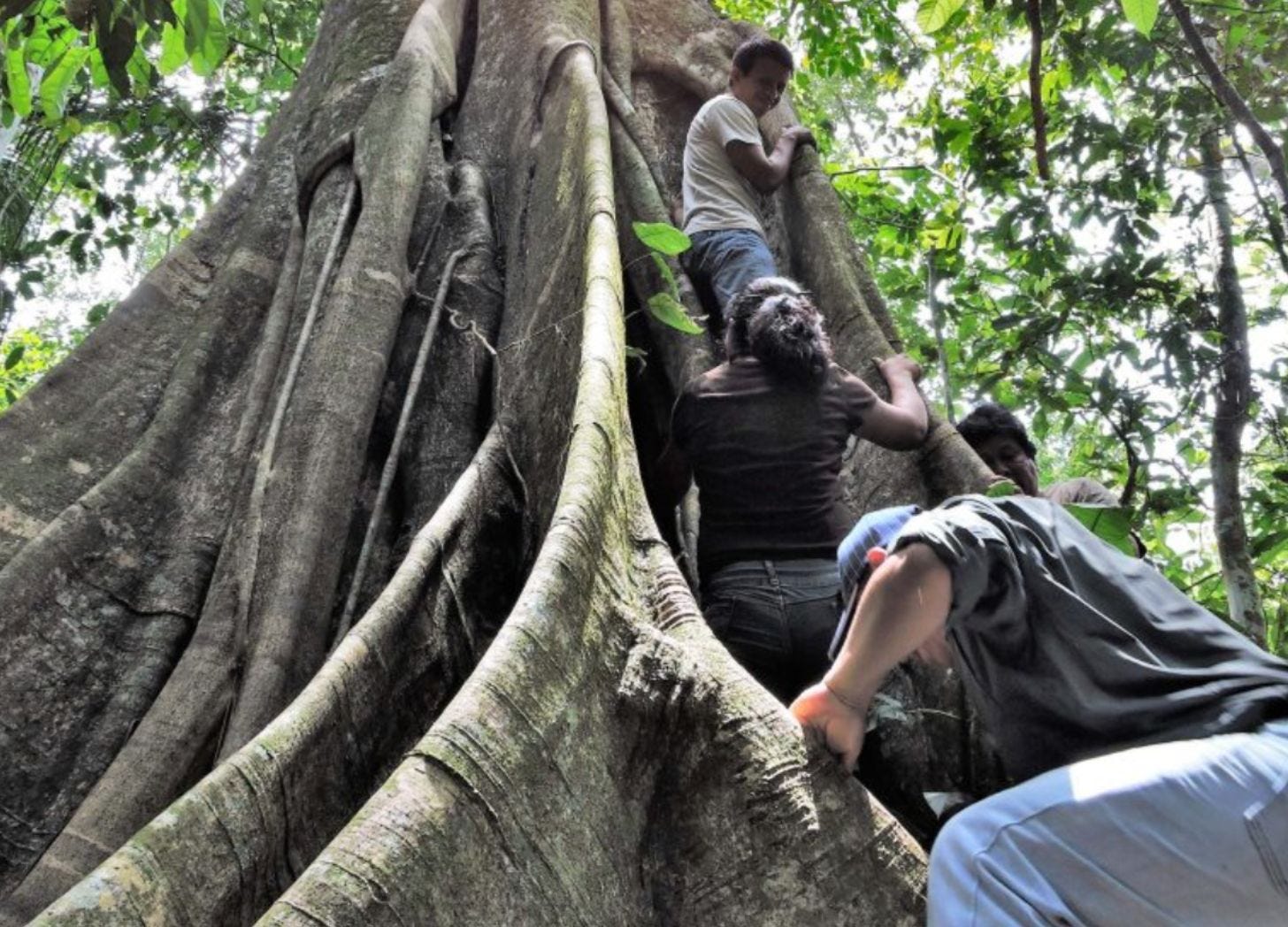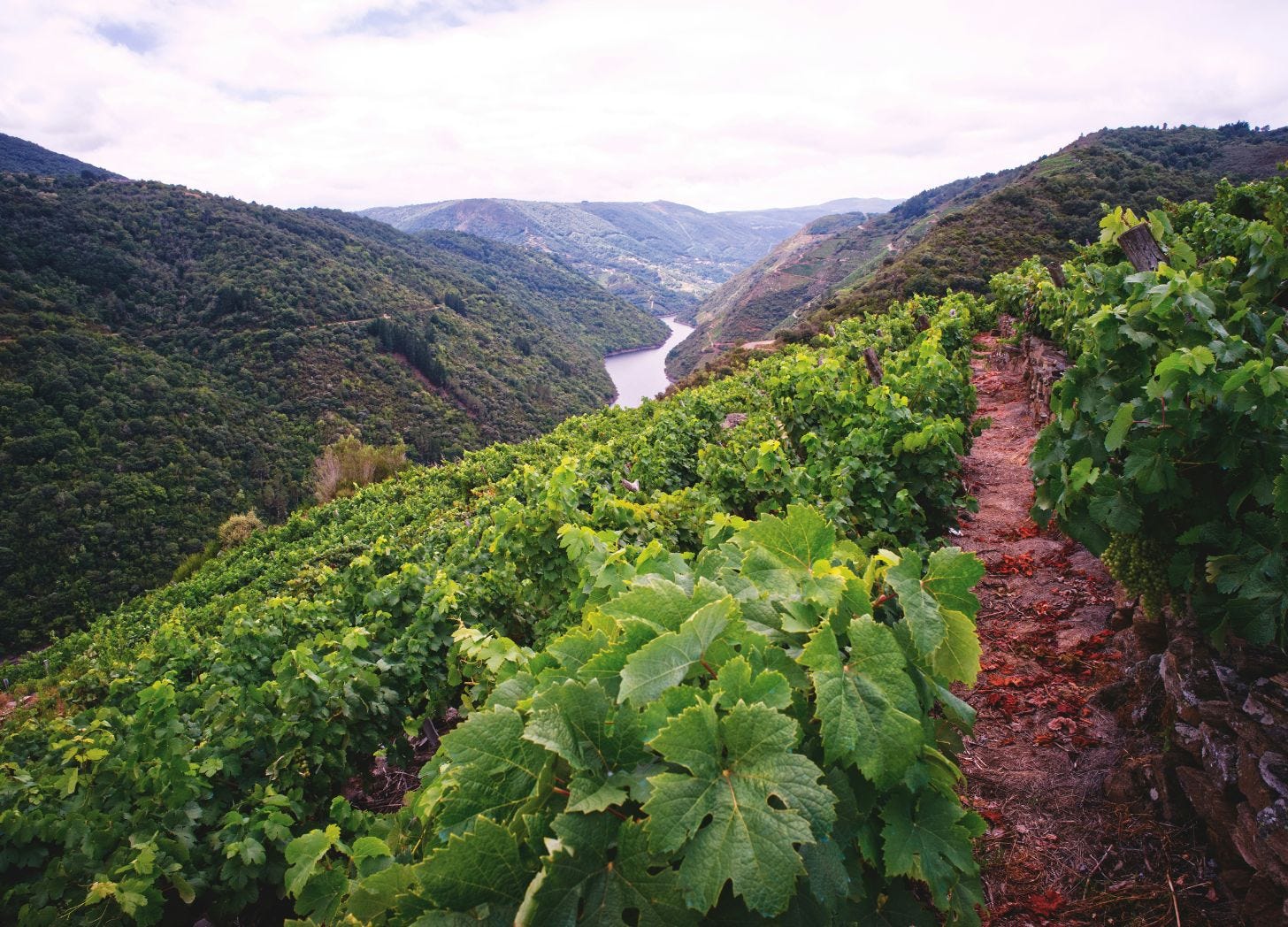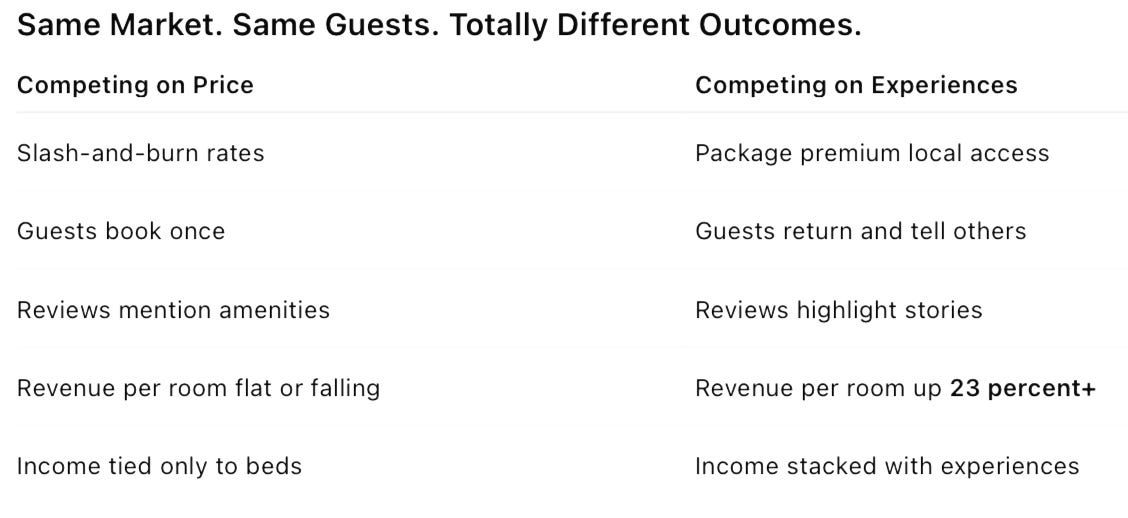Guests Don’t Just Stay — They Belong
Curated experiences turn hospitality into human connection, and connection into repeat bookings.
The Numbers That Matter
Guests are not just booking stays. They are fueling local economies:
In the U.S., Airbnb guests spent an average of $775 per trip over 4.7 nights. That equals about $165 per day(Airbnb, 2025).
In the Asia Pacific, guests spend $171 to $380 per day, with 27 percent of spending in non-urban areas (Airbnb, 2025).
According to McKinsey, luxury, boutique, and rural properties that deliver curated experiences report up to 43 percent more revenue, 31 percent more repeat bookings, and 23 percent higher revenue per available room (RevPAR) compared to peers.
Note: International spending figures vary depending on what’s included, but the story is the same everywhere. Guests in smaller markets spend big with locals.
Keep slashing prices and you’re racing to the bottom. Sell stories instead and you’re climbing past the competition.
Proof in Action
Sedona’s Hillside Boutique Hotel partnered with local artists to host private workshops. Guests did not just stay, they created.
Result: repeat bookings rose, satisfaction scores climbed, and revenue per room growth reflected industry benchmarks. Properties with curated experiences see up to 23 percent higher revenue per available room compared to peers.
Chalalán Eco-Lodge is owned by indigenous families inside Madidi National Park. Guests canoe the Amazon basin, walk with local guides, and learn traditional crafts.
Result: tourism income funds conservation and livelihoods, while seasons extend and guest spending grows. The lodge reflects the global benchmark: experiential properties achieve 31 percent more repeat bookings and stronger guest loyalty.
Douro Valley, Portugal has seen boutique inns partner with small wineries to create harvest and tasting packages.
Result: average guest spend per stay increased by double digits, showing once again that authentic integration drives longer stays and premium pricing.
Traditional ryokans in Japan offer tea ceremonies and calligraphy workshops with local artisans.
Result: higher guest satisfaction and longer average stays. Heritage plus hands-on culture equals global proof that guests pay more for meaning.
How to Turn Stays Into Stories (That Sell)
Local partnerships → Give guests access they cannot find online.
Small premium groups → Intimacy raises perceived value.
Seasonal storytelling → Guests have a reason to return in every season.
Examples
Hotels: A boutique property offering a premium cooking class for 8 guests at $200 per person, twice a week, generates $3,200 weekly. That is $12,800 in monthly revenue not tied to rooms. One concierge hour per week coordinating partnerships can return thousands. Even group business benefits: adding a farm-to-table dinner to a retreat or wedding package can boost satisfaction scores and referrals.
Vacation rentals: Charge $150 for an oyster farm tour, pay the farmer $25 per guest, and keep $125. Six guests produce $750 in one afternoon. Add a single “optional experience” link in your digital welcome guide in under 10 minutes and let guests book themselves. Off-season, create themed packages. One Vermont inn packaged storm-watching weekends and lifted midweek occupancy by 35 percent.
Your Quick Win This Week
Text a farmer. Call a potter. Ask, “What’s one behind-the-scenes moment six guests would pay double for?”
Package it. Test it. Watch what happens.
AI Prompts to Spark Ideas
For hoteliers
You are an experience designer and revenue strategist for [Hotel Name], a [X-room hotel] in [Location].
Design 3 premium guest experience packages that leverage local people, culture, or nature. For each package, include:
A partner type (such as artisan, farmer, guide) and why they add value
An exclusive access element guests cannot book independently
A short story hook for marketing (no more than 2 sentences)
Group size limits and how often the experience should run
Tiered pricing suggestions (base vs premium) with a reasoned explanation (based on benchmarks or willingness to pay)
A staffing outline (department, hours per week, training needed)
A 30-day launch plan (pilot structure, quick marketing channels, guest feedback loop)
An estimated impact (such as % increase in revenue per guest, repeat booking potential, or guest satisfaction score improvement) based on industry benchmarks
Format the output as a table.
For Vacation Rental Operators
You are an experience designer and revenue strategist for [Property Name], a [X-bedroom vacation rental] in [Location].
Design 2–3 intimate guest experiences that use local people, culture, or nature. For each experience, include:
A partner type (such as artisan, chef, guide) and why they add value
An exclusive element (behind the scenes, private access, or hands-on)
A short story hook for marketing (no more than 2 sentences)
Group size limit and how often the experience should run
An add-on price with a simple profit margin estimate (price minus partner cost)
A first-contact script (short email or text to propose the partnership)
Two guest feedback questions to measure success
The ideal guest persona (such as couples, families, adventure travelers, or wellness seekers)
A quick way to test demand (for example, add it to a welcome guide, booking confirmation email, or guest survey)
Format the output as a bulleted list.
The Sustainability Premium
Sustainability is not only ethical. It increases revenue.
Eco-certified hotels in Europe report a 20 percent increase in guest willingness to pay and 30 percent more positive reviews (PLOS ONE, 2025).
Build sustainability into your packages, and you capture both guest loyalty and premium pricing.
Your Next Step
In four weeks, you could be earning more from a cooking class than from another discount weekend. Let’s build it together.
Only 6 calls open each month — once they’re booked, they’re gone.








Personalized experiences are essential to increasing a hotel's revenue! Excellent text!